As the chill sets in during the breeezy Sokcho winter, the city transforms into a chilly wonderland that beckons any traveler in search of peaceful beauty and coastal warmth. Nestled on the eastern coast of South Korea, this port city offers a blend of natural splendor and calm seaside charm.
Whether you're strolling along its snowy beaches or indulging in the local dishes, Sokcho creates an unforgettable winter escape. Just a short distance away, the clear landscapes of Seoraksan National Park also invites adventurers to explore its snowy trails and high mountain views.
This Korean winter destination rejuvenates the spirit and soothes the soul, making Sokcho the perfect locale for those seeking a memorable and refreshing wintertime getaway.
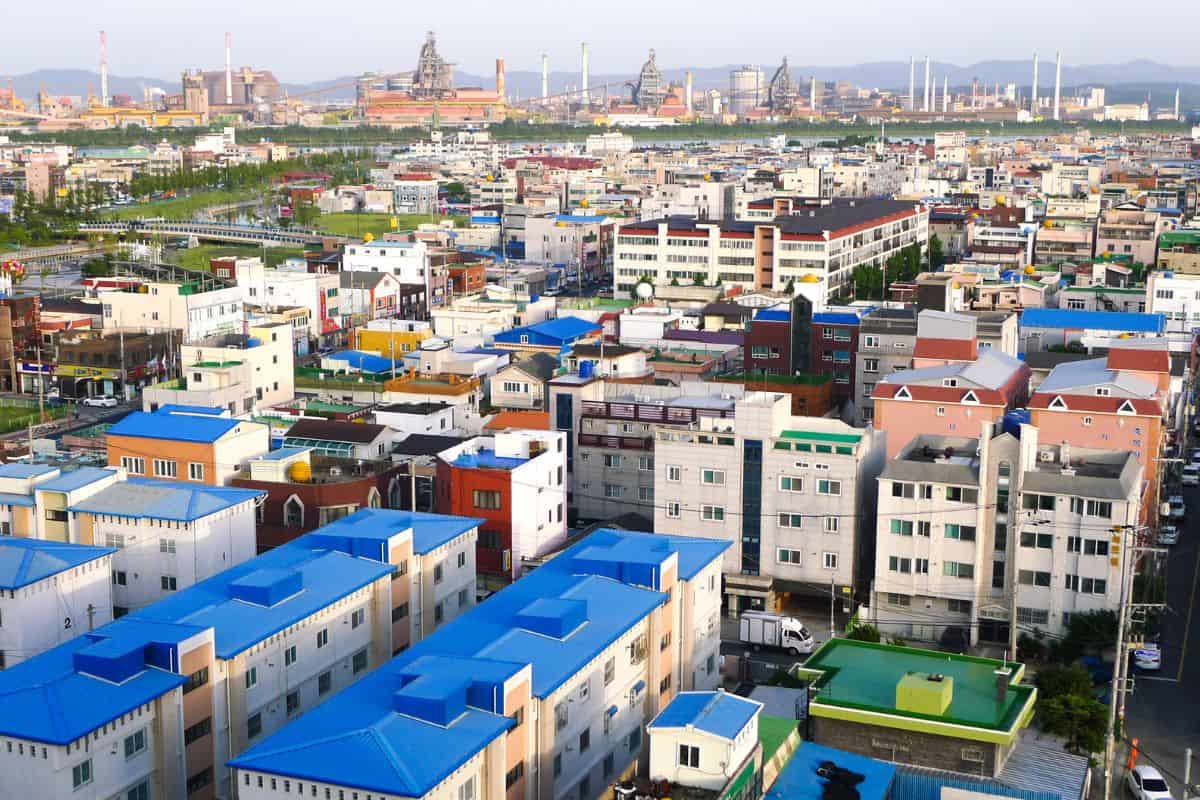
Jump to:
❄️ Why Visit Sokcho in Winter?
While Sokcho is a popular summer retreat for its idyllic beaches and vibrant energy, the winter season offers a whole new dimension to this coastal gem.
- Breathtaking Scenery: With the arrival of winter, Sokcho is transformed into a stunning landscape blanketed with powdery snow, making it perfect for picturesque walks along the coast or through the city's parks.
- Peaceful Atmosphere: The beach town may be bustling in the summer months, but during winter, Sokcho takes on a more tranquil vibe. You can enjoy quiet walks and peaceful moments without the humongous crowds of July and August.
- Temperate Climate: Compared to other parts of South Korea, Sokcho has a milder winter climate, making it a comfortable destination for those who want to avoid extreme cold temperatures. The average temperature in Sokcho in December ranges from 35°F to 38°F (3°C to 2°C). The coldest month, January, has temperatures ranging from 26°F to 34°F (1°C to -4°C).
- Winter Festivities: Sokcho hosts several winter festivals during the season, including the annual Seorak Snow Festival and Seongyojang Penguin Swimming Festival. These events offer unique cultural experiences and are great for family fun, as well as making use of the temps in the coldest parts of the season.
- Delicious Seafood: Sokcho is famous for its fresh catch of squid, crab, and other seafood delicacies. During winter, you can still enjoy these local specialties at their peak freshness and taste.
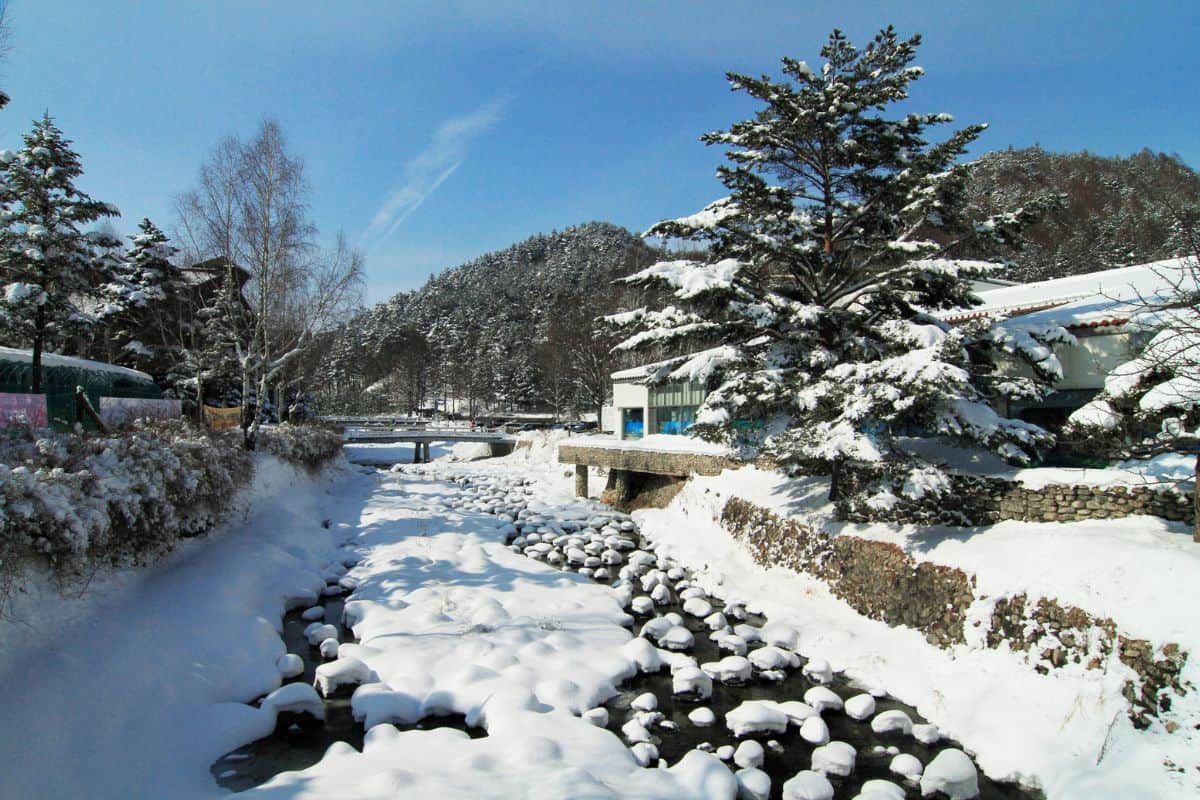
🧥 What To Wear for Winter in Sokcho
To make the most of your visit to Sokcho in winter, it's essential to pack appropriate clothing; even though it's notably warmer than the rest of Korea, it's still quite chilly. Here's what I'd recommend wearing to stay warm and comfortable during your winter adventure:
- Layer Up: The key to staying warm in Sokcho's winter weather is layering. Start with a base layer made of thermal or moisture-wicking material, like you'd yet form Uniqlo, followed by a cozy sweater or fleece, then topped off with a waterproof jacket.
- Winter Accessories: Don't forget to pack items like gloves, scarves, hats, and thick socks to protect against the cold winds and snow. If you forget these when packing for Korea, you can pick some up in Seoul before heading to Sokcho.
- Waterproof Boots: With snowfall being relatively common in Sokcho during winter, having waterproof boots will keep your feet dry and warm while exploring the city.
😎 What To Do in Sokcho During Winter
Seokrasan National Park
Hours: 8am-6pm, Monday to Sunday (for the best temperature, stick to daytime hiking)
Seoraksan National Park, arguably one of South Korea’s most beautiful natural reserves, offers a captivating winter experience that shouldn't be missed. As winter envelops the park, it becomes a wonderland of snow-covered peaks, frozen waterfalls, and serene landscapes perfect for nature enthusiasts and photographers alike.
The park is home to the iconic Ulsanbawi Rock, a 4-mile-long ridge that provides breathtaking panoramic views for those brave enough to tackle the hike in the crisp winter air. The jagged formations, adorned with snow, present an awe-inspiring sight that perfectly encapsulates the winter beauty of Seoraksan.
Not only is the park a haven for hikers, but it also boasts hot springs, which provide a relaxing escape after a day of exploring the frosty terrain. Osaek Hot Springs, located within the park, offers healing waters rich in minerals, making it a perfect spot to unwind and warm up.
For those looking for a more cultural experience, Sinheungsa Temple, which dates back to AD 652, is nestled in the park and provides a tranquil setting for reflection amidst the winter scenery. Just remember that the odds of slipping are much higher just after snowfall, so proceed with caution.
Address: 833, Seoraksan-ro, Sokcho-si, Gangwon-do, Seoul, South Korea
Closest Metro: Sokcho Station
Hours to Spend: whole day or 2 full days to comfortably visit the whole area
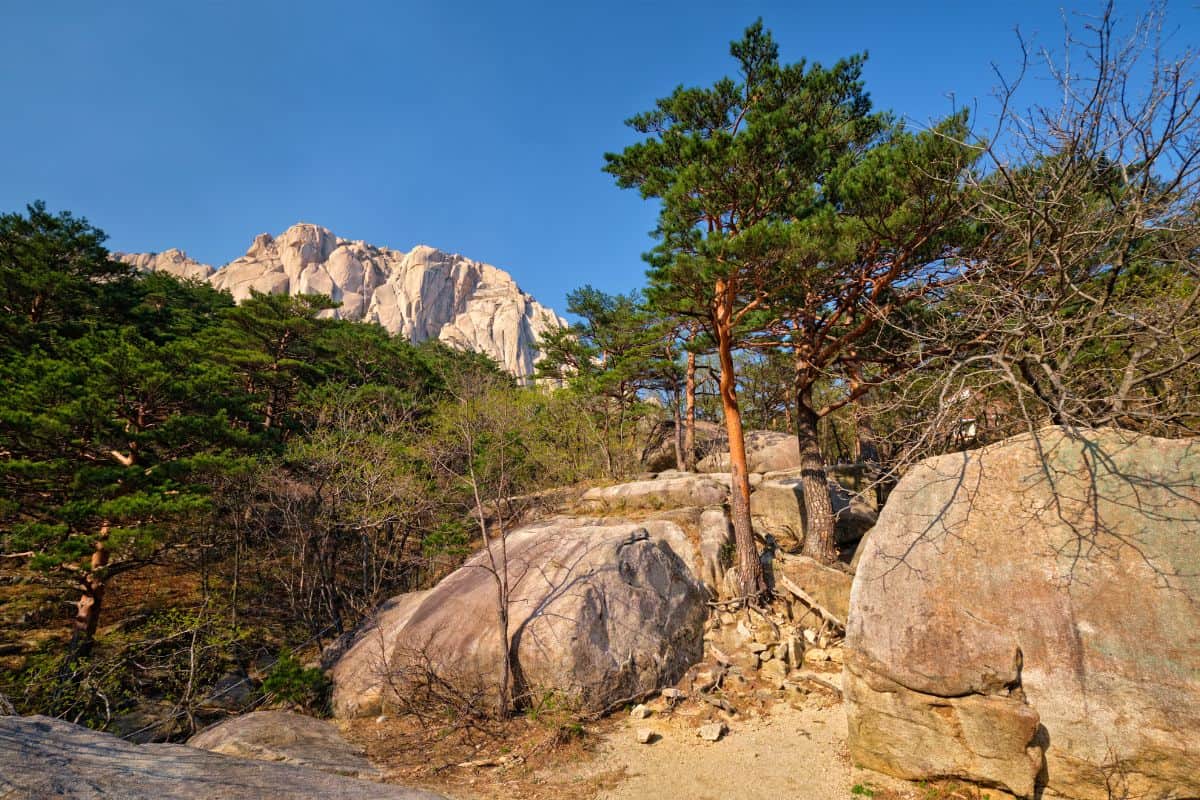
Ulsanbawi Hiking Experience
Hours: 6am-8pm, Monday to Sunday
Hiking Ulsan Rock within Seoraksan National Park is an invigorating journey that offers not only a physical challenge but also rewarding scenic views. The trail to the peak consists of approximately 800 steps that zigzag up the mountain, providing an exhilarating ascent to the summit.
As you climb, you'll traverse picturesque landscapes, including dense pine forests, rocky pathways, and serene streams. The climb can be strenuous and demands good fitness, but seasoned and novice hikers will find the experience fulfilling.
Along the way, you'll encounter stunning vistas of the surrounding valleys and peaks, all cloaked in a pristine layer of winter snow, adding a mystical touch to the already mesmerizing scenery.
Reaching the summit of Ulsanbawi rewards hikers with a panoramic view that stretches as far as the East Sea. The peak's jagged rock formations, believed to resemble a gigantic wave, offer awe-inspiring opportunities for photography and reflection.
While less taxing than the climb, the descent provides a different perspective of the landscape, allowing you to fully appreciate the tranquil beauty and natural harmony of Seoraksan in winter. For those looking to make a day of it, the trail also features several rest areas where you can pause, enjoy a hot beverage, and take in the breathtaking surroundings.
Address: Seorak-dong, Sokcho-si, Gangwon-do, South Korea
Closest Metro: Sokcho Station
Hours to Spend: 3-4 hours
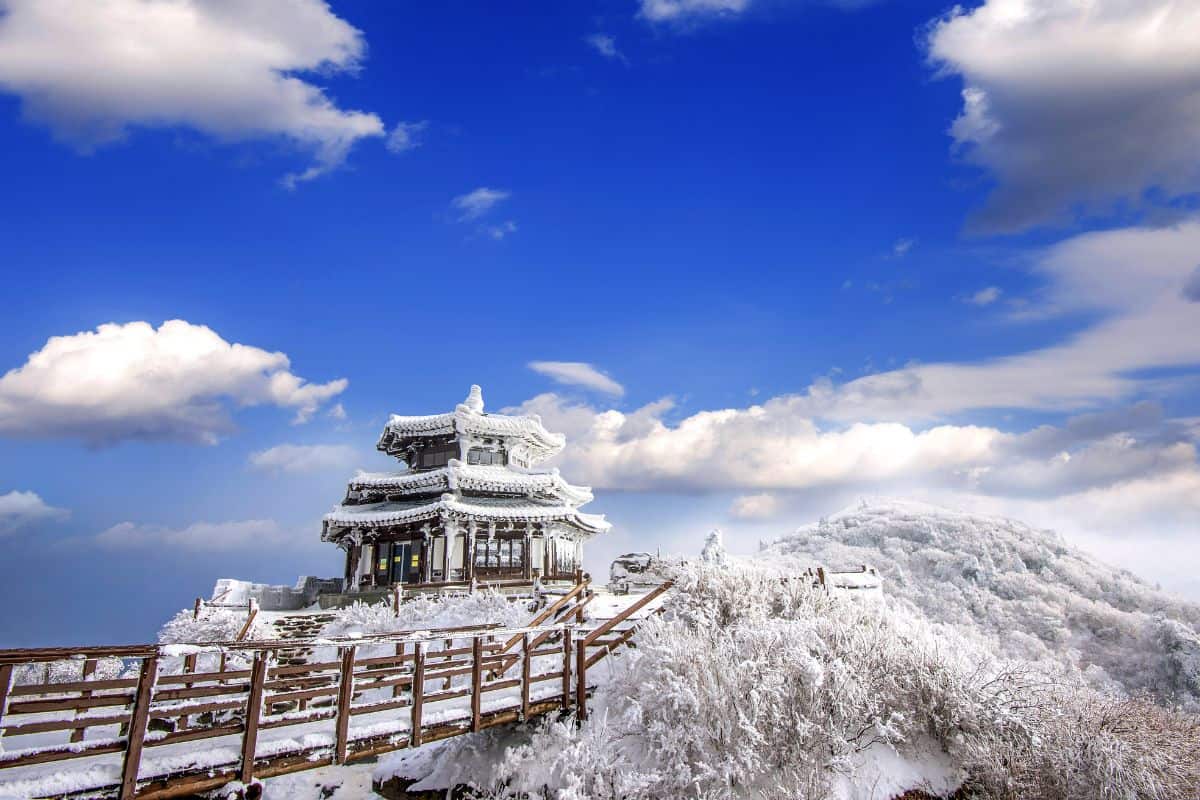
Sokcho Tourist and Fishery Market
Hours: 8am-12pm, Monday to Sunday
The Sokcho Tourist Fish Market is an essential tourist attraction in Sokcho, offering a diverse range of goods and experiences. The market is housed in a large, multifaceted building with a basement and two floors above ground. Within these floors, shoppers can find various stores selling clothes, daily necessities, and other general products.
One of the highlights is the Nonghyup Hanaro Mart, known for its variety of goods, and the Raw Fish Center, where visitors can purchase fresh live fish and seafood at reasonable prices.
Beyond the main building, specialized alley stores add to the market's charm, and make it a great indoor activity in Sokcho. Each alley is dedicated to specific products like vegetables, fruits, chili peppers, blood sausages, salted seafood, and more.
Particularly notable is the Chicken Alley, famed among tourists for its various crunchy and spicy dak gangjeong (glazed fried chicken bites) stores, each offering their unique flavors. The market's layout is designed for convenience, featuring rain protection facilities and a clean, pleasant environment, as well as a wide parking lot.
Fresh agricultural and fish products, along with dried seafood items, are among the most eye-catching offerings, drawing numerous visitors eager to taste and buy local delicacies. Whether one is there to shop, eat, or simply soak in the vibrant atmosphere, the Sokcho Tourist Fish Market promises a memorable and satisfying experience.
Address: 12, Jungang-ro 147beon-gil, Sokcho-si, Gangwon-do, South Korea
Closest Metro: Sokcho Express Bus Terminal
Hours to Spend: 3-4 hours
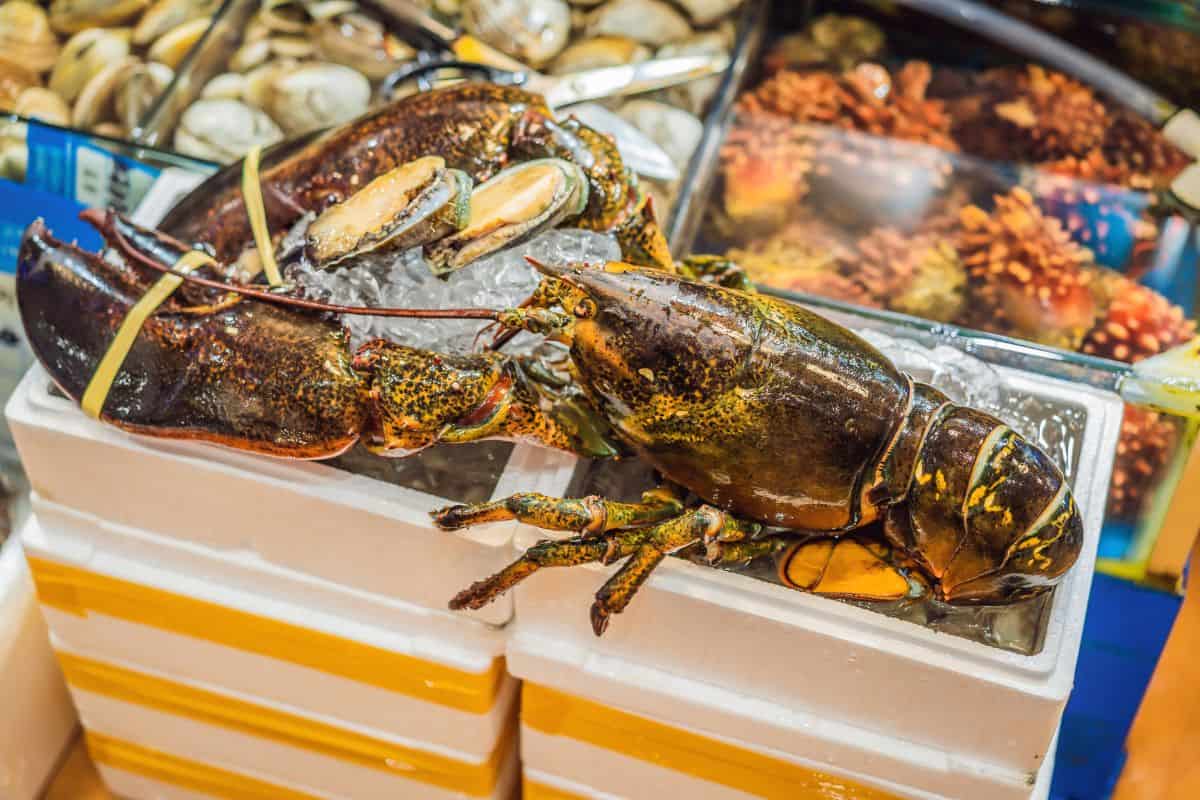
Daepohang Port
Hours: open daily with varying operating hours
Located on the southernmost tip of Sokcho, Daepohang Port is a gem for travelers seeking fresh, high-quality seafood. With the majestic Seoraksan Mountain as its backdrop, the port exudes a serene charm perfect for visitors looking to experience the local maritime culture.
While the rise of Seoraksan Mountain as a tourist destination has drawn more attention to the port, Daepohang has a rich history that predates the city of Sokcho itself. In fact, maps of Korea published shortly after the Korean War prominently featured Daepohang Port, highlighting its significance even before Sokcho became a recognized city.
Even though Daepohang Port fell into relative obscurity following the establishment of Sokcho and Sokcho Port in 1942, it remains a quaint and picturesque spot worth visiting.
A modest number of fishing boats now frequent the port, making it a peaceful haven away from the bustling activities found in larger ports. Tourists can revel in the laid-back atmosphere, enjoy the scenic views, and savor the freshest seafood, capturing a unique slice of Korean coastal life that's both tranquil and steeped in history.
Address: Daepo-dong, Sokcho-si, Gangwon-do, South Korea
Closest Metro: Sokcho Express Bus Terminal
Hours to Spend: 1-2 hours
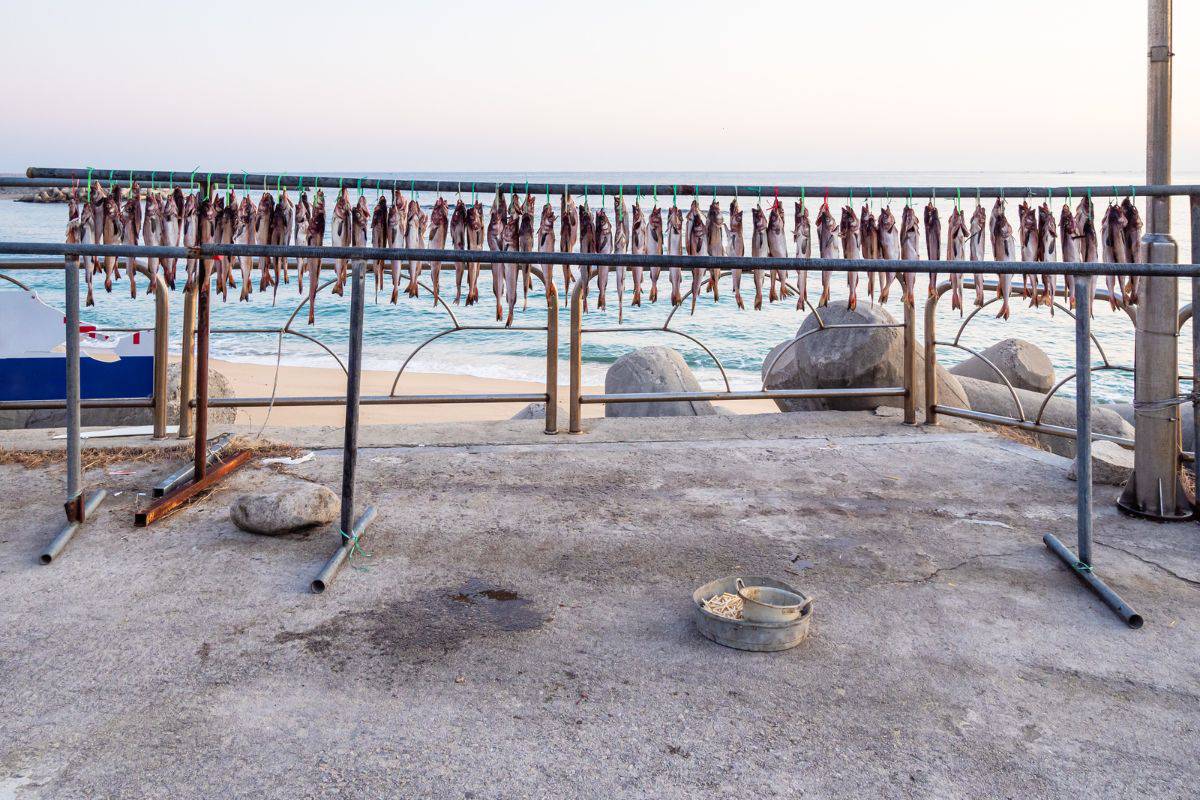
Gwon Geum Seong Fortress
Hours: 6am-8pm, Monday to Sunday
Perched 800 meters above sea level in the breathtaking Seoraksan National Park, Gwon Geum Seong Fortress is an ancient stone castle that dates back to the Goryeo dynasty.
From afar it resembles a towering peak, but as you draw nearer, the expansive stone floor and the remnants of its once-formidable walls come into view. The journey to this historical marvel can be an adventure, especially for little kids, with hiking trails for the avid trekker and a convenient cable car for those preferring a more leisurely ascent.
Upon reaching the fortress, visitors are rewarded with panoramic views that are nothing short of awe-inspiring. The majestic Seoraksan Mountain unfolds in all its glory, while the serene blue expanse of the East Sea adds to the stunning landscape.
Address: Seorak-dong, Sokcho-si, Gangwon-do, South Korea
Closest Metro: Sokcho Station
Hours to Spend: 1-2 hours

Seoraksan Sinheungsa Temple
Address: Seorak-dong, Sokcho-si, Gangwon-do, South Korea
Closest Metro: Sokcho Station
Hours to Spend: 1-2 hours
Nestled in the serene expanse of Seoraksan Mountain near Sokcho, Sinheungsa Temple is a spiritual haven that dates back to the Silla dynasty. Originally established as Hyangseongsa Temple by the revered monk Jajang in 652 A.D., the temple now belongs to the Jogye Order of Korean Buddhism.
The temple complex boasts of several cultural heritage sites, including the Geungnakbojeon Hall, a mid-Joseon period wooden structure that is a testament to Korea's rich architectural history. Visitors can also admire the Three-story Stone Pagoda at the Hyangseongsa Temple Site, which adds to the temple's historical significance.
For those looking to immerse themselves fully in the temple's tranquil ambiance, Sinheungsa Temple even offers a unique Templestay program. This program allows visitors to experience the monastic life firsthand through engaging activities. Participants can take part in Buddhist ceremonies, offer prayers, and challenge themselves with 108 prostrations.
The program also includes hands-on activities such as making lotus lanterns and rosaries, providing a holistic and enriching experience that is both spiritually and culturally enlightening. Whether seeking inner peace or a deep dive into Korean Buddhist traditions, Sinheungsa Temple offers an unforgettable journey through history and spirituality.
Address: 1137, Seoraksan-ro, Sokcho-si, Gangwon-do, South Korea
Closest Metro: Ganseong Intercity Bus Terminal (closest public transportation)
Hours to Spend: 1-2 hours
Seorak Waterpia
Hours: 10am-8:30pm, Monday to Sunday
For an exhilarating blend of relaxation and excitement, Hanhwa Resort Seorak Waterpia is a must-visit destination. This theme park harmoniously combines the tranquillity of hot spring baths with the thrill of water park adventures.
Drawing from natural hot spring water, Seorak Waterpia is meticulously divided into two main zones: the spa zone and the water zone.
Whether you're looking to unwind or seek adrenaline-fueled fun, the park provides a serene escape with its soothing indoor saunas, expansive swimming pools, and a rooftop spa that offers stunning views of the surrounding landscape.
What sets Seorak Waterpia apart is its year-round accessibility and diverse range of facilities, making it one of the most fun and kid-friendly things to do in Sokcho. The outdoor sauna, in particular, is a crowd favorite, allowing visitors to bask in the warm, invigorating waters regardless of the season.
As you drift between the spa and water zones, you'll find various attractions designed to cater to all ages and preferences, ensuring an enjoyable experience for families, friends, and solo travelers alike.
Address: 111 Misiryeong-ro 2983beon-gil, Sokcho-si, Gangwon-do, South Korea
Closest Metro: Sokcho Express Bus Terminal or Sokcho Intercity Bus Terminal
Hours to Spend: 2-3 hours
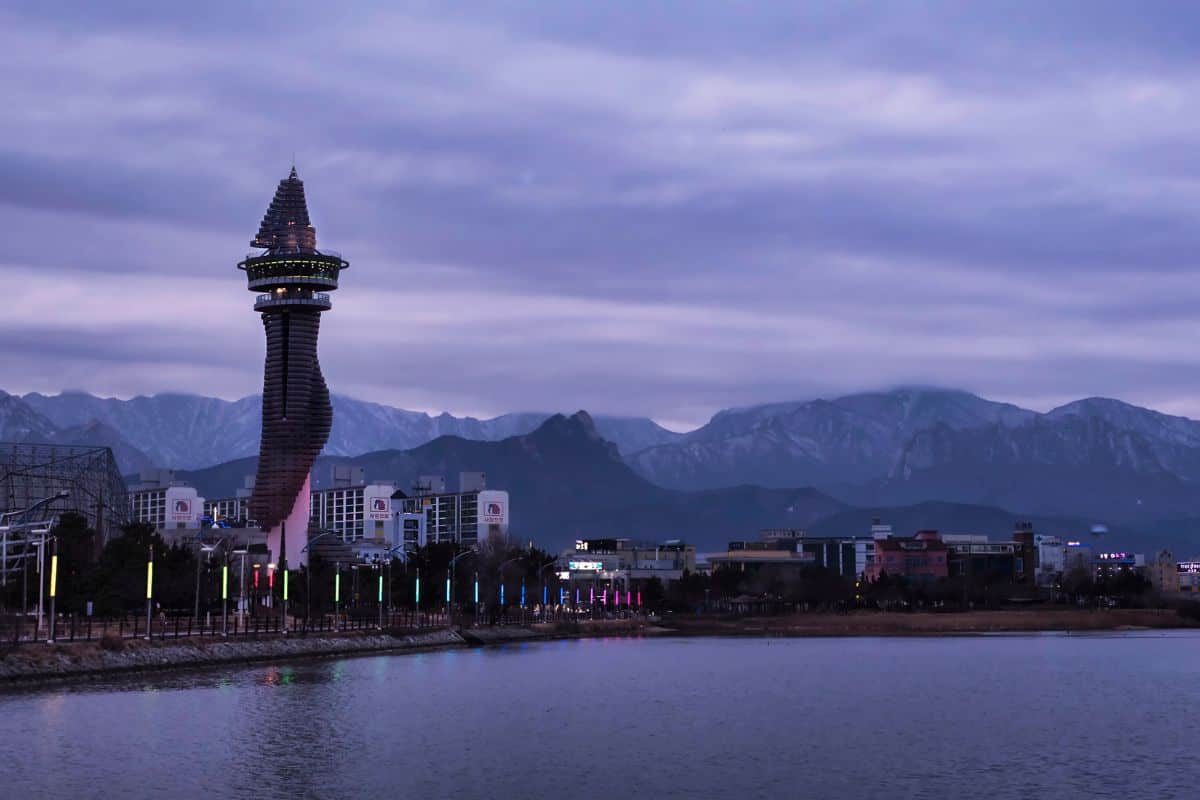
Sokcho Expo Tower
Hours: 9am-9pm (weekdays), 9am-10pm (weekends)
Situated in the picturesque area of Cheongchoho Lake, Joyang-dong, the Sokcho Expo Tower is an ideal spot for travelers looking to experience panoramic views of Sokcho. Standing at a remarkable height of 73.4 meters, this observatory tower can welcome up to 100 visitors simultaneously.
As you ascend to the observation platform, you're greeted with a breathtaking 360-degree vista encompassing Ulsanbawi Rock and Daecheongbong Peak in the majestic Seoraksan Mountain range.
The sweeping views extend to the East Sea and downtown Sokcho, offering a vivid tapestry of natural and urban landscapes that captivate any visitor's imagination. Especially enchanting during sunset, Sokcho Expo Tower provides a mesmerizing space to watch the day slowly fade into night as the sky paints itself in hues of orange, pink, and purple.
Additionally, the nearby Cheongchoho Lake is a haven for migratory birds, adding an element of serene beauty to the experience.
Address: 72 Expo-ro, Sokcho-si, Gangwon-do, South Korea
Closest Metro: Sokcho Express Bus Terminal
Hours to Spend: 2-3 hours
Yeonggeumjeong Pavilion
Hours: 24 hours, 7 days a week
Situated along the shore near the Sokcho Lighthouse in Sokcho-si City, Yeonggeumjeong Pavilion is a photographer's dream destination that offers both scenic beauty and cultural intrigue.
The name "Yeonggeumjeong" is derived from the evocative sound of waves crashing against the rocks, which locals liken to the melodic tones of a geomungo, a traditional Korean six-stringed instrument.
This harmonious interplay of nature's music is just one of the many charms that make Yeonggeumjeong Pavilion a must-visit spot for travelers.
At the end of a 50-meter-long bridge that stretches over a rugged rocky peninsula, the pavilion itself grants a panoramic view of the East Sea. Visitors can take in the expansive ocean vistas, breathe in the fresh sea air, and feel a sense of serenity as they admire the stunning coastal landscape.
Address: 43 Yeonggeumjeong-ro, Dongmyeong-dong, Sokcho-si, Gangwon-do, South Korea
Closest Metro: Dong Seoul Bus Terminal
Hours to Spend: 1-2 hours
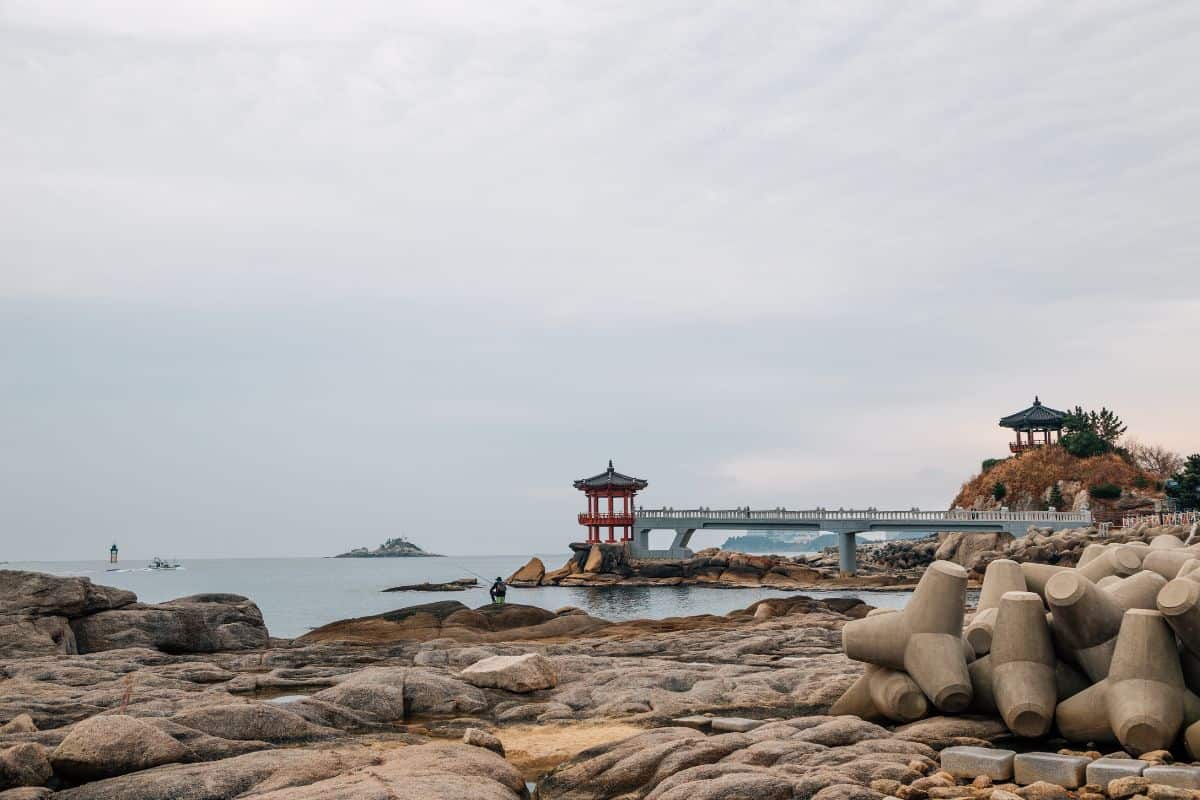
Biryongpokpo Falls
Hours: 4am-12pm (winter hours)
Just 2.4 kilometers south of the Seoraksan Small Park ticket booth, Biryongpokpo Falls is a captivating destination. Nestled between Towangseong Falls and Yukdam Falls, this 16-meter waterfall is renowned for its beauty and intriguing folklore. In winter, the falls transform into a spectacle of frozen columns.
Legend has it a dragon once resided here, ending a severe drought after villagers offered a maiden as a sacrifice. The clear pond below, encircled by a wooden observation deck, provides an ideal spot for contemplation and photography.
The moderate hiking trail to the falls takes about an hour from the Small Park, with a round-trip trek to Towangseong and Yukdam Falls extending 3 hours through the scenic Seoraksan Mountain.
Address: Seokrasan National Park
Closest Metro: Sokcho Station
Hours to Spend: 1-3+ hours

Cheongchoho Lake
Hours: 24 hours, 7 days a week
Cheongchoho Lake, located in the heart of Sokcho city, spans 5 km in circumference and covers an area of 1.3 km². Fed by the pristine waters from the Misiryeong Valley of the Taebaek Mountain Range, it eventually flows into the sea. This serene lake offers stunning natural beauty and ecological significance.
Above the lake, the Cheongchojeong Pavilion offers panoramic views of Seoraksan Mountain and the East Sea. Situated at the end of a 75-meter ocean bridge, the pavilion is especially enchanting at night with its sophisticated lighting.
Scattered sculptures of blue and yellow dragons add a touch of local legend. A well-lit trail around the lake invites daytime and nighttime strolls, with benches for rest and scenic appreciation. Nearby attractions include the Seokbong Ceramic Museum and a bird sanctuary, making Cheongchoho Lake a must-visit destination for travelers, even in the wintertime.
Address: 140 Expo-ro, Sokcho-si, Gangwon-do, South Korea
Closest Metro: Sokcho Express Bus Terminal
Hours to Spend: 1-2 hours
🤔 Frequently Asked Questions
At the Sokcho Expo Tower's observation platform you'll experience a breathtaking 360-degree view that encompasses Ulsanbawi Rock, Daecheongbong Peak in the Seoraksan Mountain range, the East Sea, and downtown Sokcho.
Yeonggeumjeong Pavilion is uniquely positioned along the shore near the Sokcho Lighthouse and is famed for the evocative sound of waves crashing against the rocks, likened to the melodic tones of a geomungo, a traditional Korean six-stringed instrument. It offers panoramic views of the East Sea and a sense of serenity as you observe the coastal landscape.
Biseondae Rock is steeped in legend, with tales stating that a Taoist hermit named Magoseon ascended to heaven from this spot. The name "Biseondae" means "the rock where a Taoist hermit flew up to the sky," highlighting its mystical allure.
At Cheongchoho Lake, you can enjoy tranquil views and scenic walks along a well-lit trail that circles the lake. The Cheongchojeong Pavilion offers panoramic views of Seoraksan Mountain and the East Sea. Nearby attractions include the Seokbong Ceramic Museum and a bird sanctuary, making it a perfect spot for daytime and nighttime strolls.

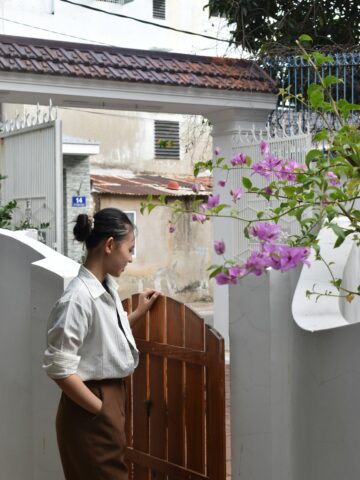
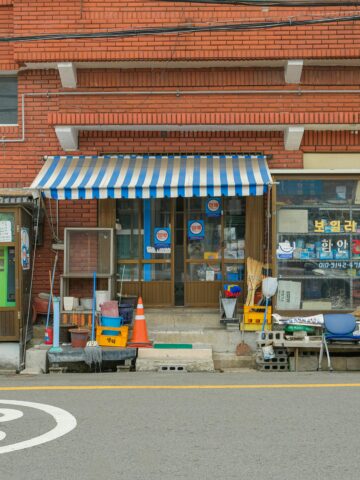
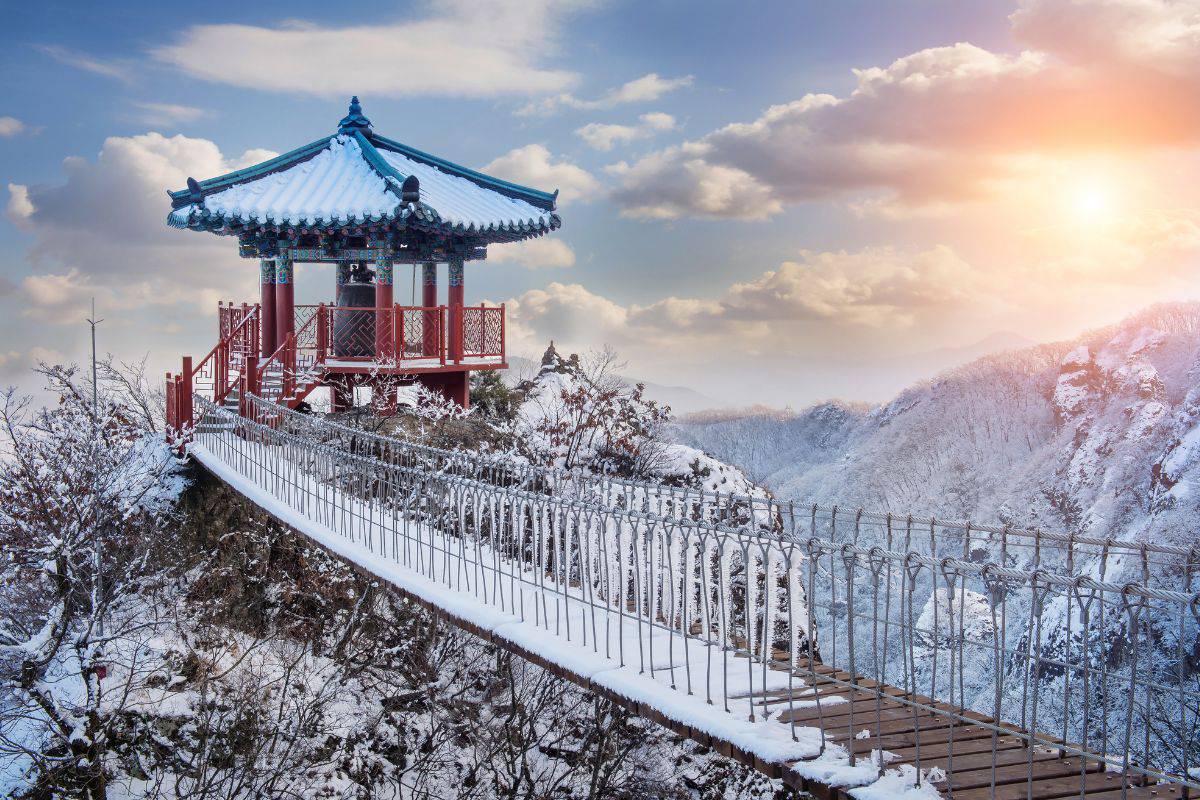
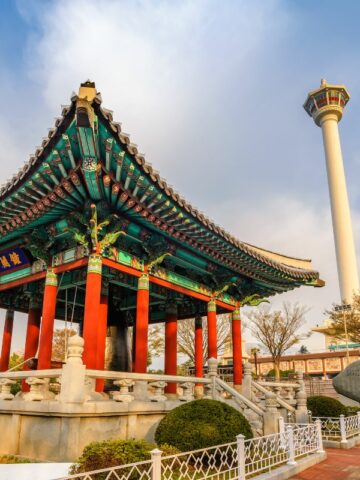
Comments
No Comments